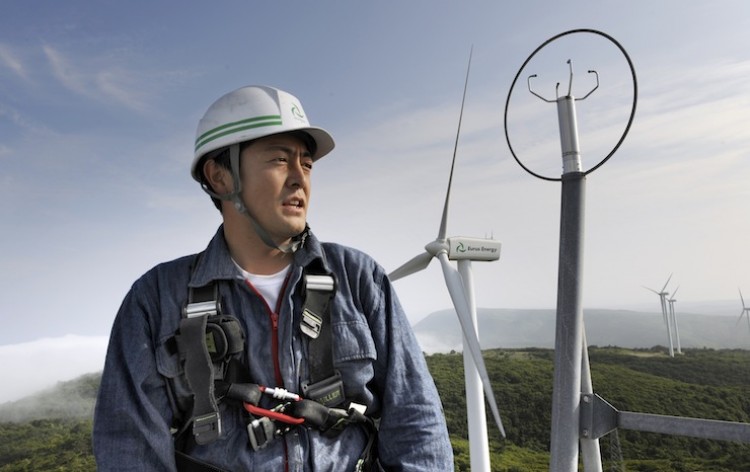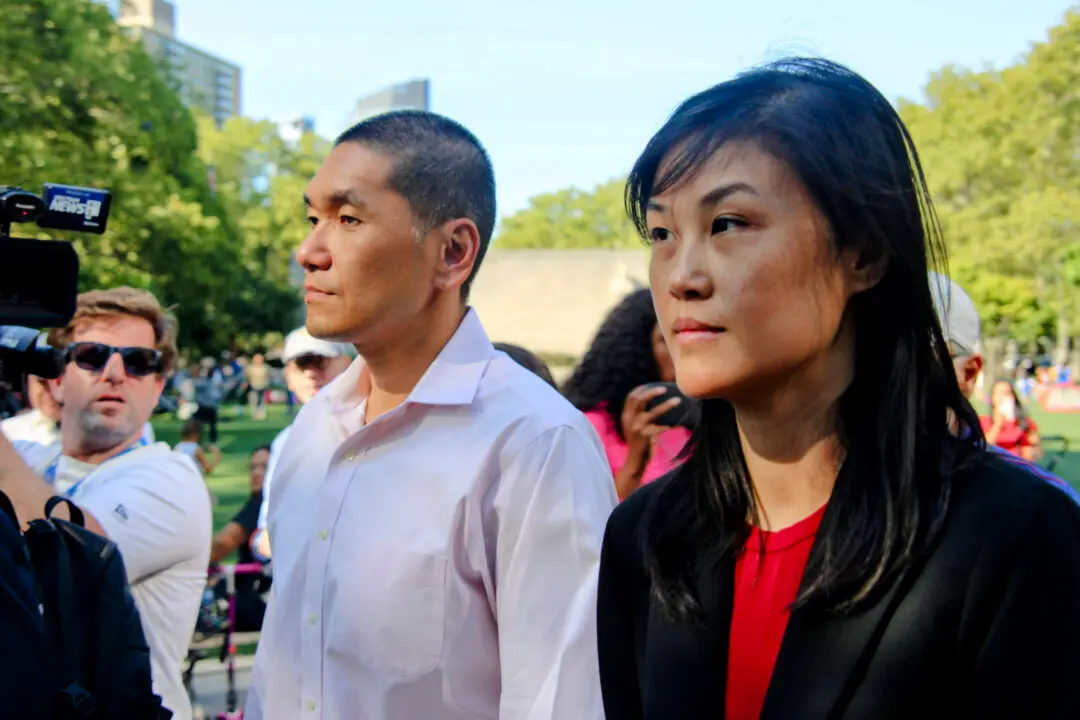Japanese prime minister Naoto Kan said Japan will increase renewable energy production to meet at least 20 percent of Japan’s energy needs by sometime in the 2020s.
Speaking on Wednesday at the commemoration ceremony of the 50th anniversary of the Organization for Economic Co-operation and Development (OECD), Kan said Japan is rethinking its basic energy plan.
In the wake of the Fukushima nuclear crisis, Japan will focus more on developing technology for renewables than it was previously in national energy plans.
The prime minister said Japan will mobilize all its resources to, “break the barrier to practical use due to such aspects as technology and costs, “ engaging in “drastic technological innovation” to make renewable energy sources such as wind and solar provide for a fifth of Japan’s needs.
Kan said Japan will push ahead with solar power first, working to cut costs and make the energy source more practical.
Part of the plan is to install solar panels on the roofs of all structurally suitable buildings, as many as 10 million. According to data from the U.S. Department of Energy, in 2008, renewable energy sources provided 2 percent of Japan’s energy production. Power from hydroelectric plants provided 8 percent of production.
Kan also said nuclear power will remain part of the equation, but Japan will push for higher safety standards. To accomplish this, the government has already established a committee to investigate and review potential gaps in safety.
Fossil fuels will continue to provide the largest portion of Japan’s energy, but Kan said the government will also push to minimize carbon dioxide emissions.
Previously Japan saw nuclear power as a clean alternative to fossil fuel and planned to boost nuclear to power from 30 percent to 50 percent of energy production by 2030, enabling the country to cut carbon dioxide emissions.
Now it appears Japan will work to fill that gap with renewable energy sources in order to stay on schedule in reducing carbon dioxide emissions.
On Thursday, Kan spoke at the G8 meeting pledging to make further contributions to nuclear safety including sharing lessons learned from the Fukushima crisis, Kan said according to Kyodo News.
The nuclear crisis from the March 11 earthquake and tsunami is still far from over. It was just revealed over the last week that all three crippled reactors experienced at least partial fuel meltdowns. The plant operator, TEPCO, is striving to bring the situation under control by January.
The incident at the Fukushima Daiichi nuclear plant, the worst nuclear incident since the 1986 Chernobyl meltdown, was set off by Japan’s March 11 earthquake and resulting tsunami.
At the G8 meeting Kan also said that later this year Japan hopes to, along with the International Atomic Energy Agency, host a meeting on nuclear safety, reported Kyodo News.
Speaking on Wednesday at the commemoration ceremony of the 50th anniversary of the Organization for Economic Co-operation and Development (OECD), Kan said Japan is rethinking its basic energy plan.
In the wake of the Fukushima nuclear crisis, Japan will focus more on developing technology for renewables than it was previously in national energy plans.
The prime minister said Japan will mobilize all its resources to, “break the barrier to practical use due to such aspects as technology and costs, “ engaging in “drastic technological innovation” to make renewable energy sources such as wind and solar provide for a fifth of Japan’s needs.
Kan said Japan will push ahead with solar power first, working to cut costs and make the energy source more practical.
Part of the plan is to install solar panels on the roofs of all structurally suitable buildings, as many as 10 million. According to data from the U.S. Department of Energy, in 2008, renewable energy sources provided 2 percent of Japan’s energy production. Power from hydroelectric plants provided 8 percent of production.
Kan also said nuclear power will remain part of the equation, but Japan will push for higher safety standards. To accomplish this, the government has already established a committee to investigate and review potential gaps in safety.
Fossil fuels will continue to provide the largest portion of Japan’s energy, but Kan said the government will also push to minimize carbon dioxide emissions.
Previously Japan saw nuclear power as a clean alternative to fossil fuel and planned to boost nuclear to power from 30 percent to 50 percent of energy production by 2030, enabling the country to cut carbon dioxide emissions.
Now it appears Japan will work to fill that gap with renewable energy sources in order to stay on schedule in reducing carbon dioxide emissions.
On Thursday, Kan spoke at the G8 meeting pledging to make further contributions to nuclear safety including sharing lessons learned from the Fukushima crisis, Kan said according to Kyodo News.
The nuclear crisis from the March 11 earthquake and tsunami is still far from over. It was just revealed over the last week that all three crippled reactors experienced at least partial fuel meltdowns. The plant operator, TEPCO, is striving to bring the situation under control by January.
The incident at the Fukushima Daiichi nuclear plant, the worst nuclear incident since the 1986 Chernobyl meltdown, was set off by Japan’s March 11 earthquake and resulting tsunami.
At the G8 meeting Kan also said that later this year Japan hopes to, along with the International Atomic Energy Agency, host a meeting on nuclear safety, reported Kyodo News.






